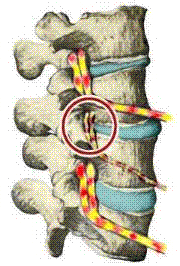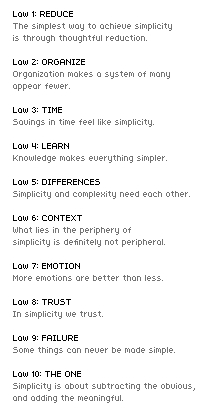Ways of life
Guidelines for a more meaningful life
Contents
Baha’i | Buddism | Chiropractic Principles | Creativity & Innovation | Eight Tools | FISH! philosophy | Four Agreements | Four Noble Truths & Eightfold Path | Humanism | Kwanzaa principles | Laws of Simplicity | Leonardo da Vinci | Love Languages | Making it Stick | Music | Namaste | Native American traditional teachings | Nine Insights | Peace | People | The Prophet |Repairing the World | Secrets From the Delphi Cafe | Seven Stages of Marriage |Simple Path | Spiritual Laws of Success/Life | The Secret | Thoreau | Unitarianism | Virtues | What Do You Stand For? | Other
Miscellaneous notes and thoughts
Baha’i
from http://www.bahai.org/:
All humanity is one family.
Women and men are equal.
All prejudice—racial, religious, national, or economic—is destructive and must be overcome.
We must investigate truth for ourselves, without preconceptions.
Science and religion are in harmony.
Our economic problems are linked to spiritual problems.
The family and its unity are very important.
There is one God.
All major religions come from God.
World peace is the crying need of our time.
back to top
Creativity and Innovation
from Brave New Workshop
Creative Funnel
Idea generation –> refinement –> collaboration –> engineering –> focus groups –> road testing –> product to market
Innovation
1. Accept all ideas 2. Defer judgment 3. Share focus and accept all styles 4. Declarations 5. Create a statusless environment 6. Create a reward system for creative risk-taking 7. Yes first! 8. Perceive change as fuel
back to top
Buddism
NOTE: Not Buddhism
Founding Buds
Ronald Flesher
Robert Stall
New Buds
Gary Solomon 7/21/07
Patrick Flesher 10/5/07
(pending approval)
Tenets of Buddism
1. Buds trust Buds.
2. Buds are trustworthy.
3. Buds take care of Buds.
4. Buds never pressure Buds. Example: “If you can’t, it’s OK.”
5. Buds pay for Bud’s lunch on his birthday.
6. Buds pay for Bud’s lunch on any graduation.
7. Buds are always mindful of the meaning of life.
8. Buds go for chicken wings at the slightest excuse.
9. Buds of Buds are Buds.
10. Male married children of Buds are Buds (pending approval by Founding Buds).
11. A Bud rescues and transports a Bud when his car breaks down, no questions asked.
back to top
Chiropractic Principles
The Cafe of Life Chiropractic Studio
THE 33 CHIROPRACTIC PRINCIPLES 1. THE MAJOR PREMISE. A Universal Intelligence is in all matter and continually gives to it all its properties and actions, thus maintaining it in existence.2. THE CHIROPRACTIC MEANING OF LIFE. The expression of this intelligence through matter is the Chiropractic meaning of life.3. THE UNION OF INTELLIGENCE AND MATTER. Life is necessarily the union of intelligence and matter.4. THE TRIUNE OF LIFE. Life is a triune having three necessary united factors, namely Intelligence, Force, and Matter.5. THE PERFECTION OF THE TRIUNE. In order to have 100% Life, there must be 100% Intelligence, 100% Force, 100% Matter.
1. THE MAJOR PREMISE. A Universal Intelligence is in all matter and continually gives to it all its properties and actions, thus maintaining it in existence.2. THE CHIROPRACTIC MEANING OF LIFE. The expression of this intelligence through matter is the Chiropractic meaning of life.3. THE UNION OF INTELLIGENCE AND MATTER. Life is necessarily the union of intelligence and matter.4. THE TRIUNE OF LIFE. Life is a triune having three necessary united factors, namely Intelligence, Force, and Matter.5. THE PERFECTION OF THE TRIUNE. In order to have 100% Life, there must be 100% Intelligence, 100% Force, 100% Matter.
6. THE PRINCIPLE OF TIME. There is no process that does not require time.
7. THE AMOUNT OF INTELLIGENCE IN MATTER. The amount of intelligence for any given amount of matter is 100%, and is always proportional to its requirements.
8. THE FUNCTION OF INTELLIGENCE. The function of intelligence is to express force.
9. THE AMOUNT OF FORCE CREATED BY INTELLIGENCE. The amount of force created by intelligence is always 100%.
10. THE FUNCTION OF FORCE. The function of force is to unite intelligence and matter.
11. THE CHARACTER OF UNIVERSAL FORCES. The forces of Universal Intelligence are manifested by physical laws; are unswerving and unadapted, and have no solicitude for the structures in which they work.
12. INTERFERENCE WITH THE TRANSMISSION OF UNIVERSAL FORCES. There can be interference with transmission of universal forces.
13. THE FUNCTION OF MATTER. The function of matter is to express force.
14. UNIVERSAL LIFE. Force is manifested by motion in matter; all matter has motion, therefore there is universal life in all matter.
15. NO MOTION WITHOUT THE EFFORT OF FORCE. Matter can have no motion without the application of force by intelligence.
16. INTELLIGENCE IN BOTH ORGANIC AND INORGANIC MATTER. Universal Intelligence gives force to both organic and inorganic matter.
17. CAUSE AND EFFECT. Every effect has a cause and every cause has effects.
18. EVIDENCE OF LIFE. The signs of life are evidence of the intelligence of life.
19. ORGANIC MATTER. The material of the body of a “living thing” is organized matter.
 20. INNATE INTELLIGENCE. A “living thing” has an inborn intelligence within its body, called Innate Intelligence.21. THE MISSION OF INNATE INTELLIGENCE. The mission of Innate Intelligence is to maintain the material of the body of a “living thing” in active organization.
20. INNATE INTELLIGENCE. A “living thing” has an inborn intelligence within its body, called Innate Intelligence.21. THE MISSION OF INNATE INTELLIGENCE. The mission of Innate Intelligence is to maintain the material of the body of a “living thing” in active organization.
22. THE AMOUNT OF INNATE INTELLIGENCE. There is 100% of Innate Intelligence in every “living thing,” the requisite amount, proportional to its organization.
23. THE FUNCTION OF INNATE INTELLIGENCE. The function of Innate Intelligence is to adapt universal forces and matter for use in the body, so that all parts of the body will have coordinated action for mutual benefit.
24. THE LIMITS OF ADAPTATION. Innate Intelligence adapts forces and matter for the body as long as it can do so without breaking a
universal law, or Innate Intelligence is limited by the limitations of matter.
25. THE CHARACTER OF INNATE FORCES. The forces of Innate Intelligence never injure or destroy the structures in which they work.
26. COMPARISON OF UNIVERSAL AND INNATE FORCES. In order to carry on the universal cycle of life, Universal forces are destructive, and Innate forces constructive, as regards structural matter.
27. THE NORMALITY OF INNATE INTELLIGENCE. Innate Intelligence is always normal and its function is always normal.
28. THE CONDUCTORS OF INNATE FORCES. The forces of Innate Intelligence operate through or over the nervous system in animal bodies.
29. INTERFERENCE WITH THE TRANSMISSION OF INNATE FORCES. There can be interference with the transmission of Innate Forces.
30. THE CAUSE OF DIS-EASE. Interference with the transmission of Innate forces causes incoordination or dis-ease.
31. SUBLUXATIONS. Interference with the transmission in the body is always directly or indirectly due to subluxations in the spinal column.
32. THE PRINCIPLE OF COORDINATION. Coordination is the principle of harmonious action of all the parts of an organism, in fulfilling their offices and purposes.
33. THE LAW OF DEMAND AND SUPPLY. The Law of Demand and Supply is existent in the body in its ideal state; wherein the “clearing house,” is the brain, Innate the virtuous “banker,” brain cells “clerks,” and nerve cells “messengers.”
back to top
Eight Tools (from BetterMen.org)
1: Silence The Little Boy
2: Express But Don’t Defend Your Feelings
3: Cooperate Without Compromising Your N.U.T.s (Non-negotiable, Unalterable Terms)
4: Run The Sex And Romance Departments
5: Be The Rock
6: Don’t Argue
7: Listen
8: Develop Trusting Relationships With Men
back to top
FISH! philosophy
1. Choose Your Attitude
2. Play
3. Be There
4. Make Their Day
back to top
The Four Agreements (Toltec philosophy)
from The Four Agreements by Don Miguel Ruiz (Amber-Allen Publishing, San Rafael, California 1997)
Paying attention – discriminating and focusing on that which you want to believe | Domestication of humans – agreeing without believing | Breaking old agreements
1) Be impeccable with your word 2) Don’t take anything personally 3) Don’t make assumptions 4) Always do your best
back to top
The Four Noble Truths and Eightfold Path (Buddhist Philosophy)
The Four Noble Truths
http://www.thebigview.com/buddhism/fourtruths.html
1. Life means suffering.
2. The origin of suffering is attachment.
3. The cessation of suffering is attainable.
4. There is a path to the cessation of suffering.
The Eightfold Path to Enlightenment
http://www.thebigview.com/buddhism/eightfoldpath.html
Wisdom – 1. Right View 2. Right Intention
Ethical Conduct – 3. Right Speech 4. Right Action 5. Right Livelihood
Mental Development – 6. Right Effort 7. Right Mindfulness 8. Right Concentration
back to top
Humanism
American Humanism Association | Humanist Manifesto 2000
back to top
Kwanzaa seven principles (Nguzo Saba)
Umoja (unity)
Kujichagulia (self-determination)
Ujima (collective work and responsibility)
Ujamaa (cooperative economics)
Nia (purpose)
Kuumba (creativity)
Imani (faith)
back to top
Laws of Simplicity
 John Maeda’s When A Good Idea Works article | web site
John Maeda’s When A Good Idea Works article | web site

The Original Ten Laws
1. A complex system of many functions can be simplified by carefully grouping related functions.
2. The positive emotional response derived from a simplicity experience has less to do with utility, and more to do with saving time.
3. When the richness of an experience is increased in a manner that facilitates the perception of the overall intent, by all means don’t skimp. Add more!
4. The more you know about something beforehand, the simpler it will ultimately be perceived.
5. A material’s failure to comply to a specific application provides indication that its more natural usage lies elsewhere.
6. In order to “feel,” you gotta have noise. Too much noise, and all you’ve got is noise.
7. The more care, attention, and effort applied to that which is less, the more it shall be perceived as more than it really is.
8. Recognize not only the absolute laws of the physical universe as important constraints, but also the artificial laws as of equal importance when striving for simplicity.
9. Simplification most commonly occurs through conscious reduction; the more uncommon form involves subconscious compression.
10. Less breeds less; more breeds more. Equilibrium is found at many points between less and more, but never nearest the extrema.
11. Simplicity is about subtracting the obvious, while adding the meaningful.
12. A pure and resonant experience is only as simple as the greater context where it is appreciated.
13. Electronic devices cannot achieve the ultimate level of simplicity unless they are not only untethered, but have (at least) the appearance of being unpowered.
back to top
Leonard da Vinci’s 7 Principles of Learning to Be Guided by In Life
from the Northern Ireland Association for Mental Health
![]()
An insatiably curious approach to life and an unrelenting quest for continuous learning.
![]()
A commitment to test knowledge through experience, persistence, and a willingness to learn from mistakes.
![]()
The continual refinement of the senses, especially sight, as the means to enliven experience.
![]()
A willingness to embrace ambiguity, paradox, and uncertainty.
![]()
The development of the balance between science and art; ‘whole brain’ thinking.
![]()
The cultivation of grace, ambidexterity, fitness, poise.
![]()
A recognition of and appreciation for the interconnectedness of things and phenomena.
back to top
Love Languages
from The Five Love Languages by Gary Chapman
Acts of Service | Physical Touch | Quality Time | Receiving Gifts | Words of Affirmation
back to top
Making it Stick
from Made to Stick by Chip and Dan Heath
Six factors (in combination) that make the difference between what’s memorable and what isn’t
1. Simplicity (any idea over one is too many)
2. Unexpectedness (a surprise grabs our attention)
3. Concreteness (the more dimensions of details the more hooks our minds use to create a memory)
4. Credibility (even untrue stories don’t stick unless there’s a hint of truth, such as beware of what’s too good to be true in the urban legend that opens the book)
5. Incite Emotions in Listeners (we remember emotional experiences much more than anything else; we care more about individuals than groups; and we care about things that reflect our identities)
6. Combine Messages in Stories (information is more memorable and meaningful in a story form . . . like the urban legend that opens the book)
back to top
Music
All You Need Is Love Blowin’ In the Wind Bridge Over Troubled Water Cabaret Cat’s In the Cradle Circle Circle of Life Father and Son Here Comes the Sun Imagine Impossible Dream I Wanna Learn a Love Song King of the Road Let There Be Peace On Earth Life’s A Dance Like A Rolling Stone (Billy Stall) Like A Rolling Stone (Bob Dylan) Mr. Tambourine Man My Way Over the Rainbow Peaceful Easy Feelin’ Peace Train People Who Need People Redemption Song Revolution Sound of Music Sunrise, Sunset Teach Your Children That’s What Friends Are For The Chain of Love The Walk Tomorrow What A Wonderful World What the World Needs Now Is Love
back to top
Namaste
Dr. Stall’s Concept of Namaste (with hyperlinks) | Image file (.jpg) | Pronunciation
back to top
Native American traditional teachings
Traditional Teachings Handbook
References:
Jake Thomas Learning Centre
Little River Band of Ottawa Indians – Anishinaabemowin Program
Kanawayhitowin: Taking Care of Each Other’s Spirit
Four Directions Teachings
Native Women’s Centre, Aboriginal Healing & Outreach Program
Thirteen Grandmother Moon Teachings – January (Spirit Moon), February (Bear Moon), March (Sugar Moon), April (Sucker Moon), May (Flower Moon), June (Strawberry Moon), July (Raspberry Moon), August (Thimbleberry Moon), September (Corn Moon), October (Falling Leaves Moon), November (Freezing Moon), December (Little Spirit Moon), Blue Moon (Big Spirit Moon)
Medicine Wheel – East (Mental, Tobacco, Vision, Child), South (Physical, Cedar, Time, Youth), West (Emotional, Sage, Feeling, Adult), North (Spiritual, Sweetgrass, Movement, Elder)
7 Grandfathers’ Teachings – Wisdom, Love, Respect, Bravery, Honesty, Humility, Truth
Iroquois Thanksgiving Address – The People, The Earth Mother, The Waters, The Fish, The Plants, The Food Plants, The Medicine Herbs, The Animals, The Trees, The Birds, The Four Winds, The Thunderers, The Sun, Grandmother Moon, The Stars, The Enlightened Teachers, The Creator
4 Sacred Medicines – sema (tobacco), kiishig (cedar), mshkwadewashk (sage), wiingash (sweetgrass)
Six Nations Clans – Mohawk (People of the Flint), Oneida (People of the Standing Stone), Onondaga (People of the Hills), Cayuga (People of the Great Swamp), Seneca (People of the Great Hill), Tuscarora (Shirt Wearing People)
back to top
The Nine Insights
from The Celestine Prophecy by James Redfield (Warner Books 1993) book finished 5/31/98; notes from 11/15/98)
A critical mass (consciousness of coincidences)
The longer now (connection to the past; material survival to spiritual awakening; new world view)
A matter of energy (energy can flow between all matter; the physical world is a vast system of energy)
The struggle for power (people feed off the energy of each other)
The message of the mystics (euphoric connection with the universe; drawing energy from the universe)
Clearing the past (transcending our control dramas; waking up to who we really are)
Engaging the flow (building energy; focusing on key questions; accepting intuitive guidance & coincidences)
The interpersonal ethic (achieving the Higher Person by synergizing and sharing energy; bringing out the best in everyone)
The emerging culture(vibration level will increase until the Heaven before us opens up)
back to top
Peace
back to top
People
Cantor Susan Wehle – In Memoriam | Listen to Susan – The Healing Circle
back to top
The Prophet
by Kahlil Gibran
2. Love
3. Marriage
4. Children
5. Giving
7. Work
9. Houses
10. Clothes
13. Laws
14. Freedom
16. Pain
17. Self-Knowledge
18. Teaching
19. Friendship (On Friendship – Cicero)
20. Talking
21. Time
22. Good and Evil
23. Prayer
24. Pleasure
25. Beauty
26. Religion
27. Death
28. The Farewell
back to top
Repairing the World – Tikkun Olam
Wikipedia | My Jewish Learning | Inner Frontier
back to top
Secrets From the Delphi Cafe
by Scott Friedman and Bob Rich
The Code to Happiness
Healthy Lifestyles
Appreciation
Passion
Patience
Youthful Curiosity
Living in the moment
Openness
Value others
Engagement
Focus on…
High impact
Opportunities (rather than problems). Always act from your…
Principles (rather than expediency) and choose to work first on areas that are…
Easy to resolve or put into effect so as to build momentum for ongoing initiatives.
back to top
Seven Stages of Marriage
from The 7 Stages of Marriage by Rita M. DeMaria and Sari Harrar
Passion | Realization | Rebellion | Cooperation | Reunion | Explosion | Completion
back to top
A Simple Path
from A Simple Path by Mother Teresa, Ballantine Books 1995 (notes from 11/15/98)
The fruit of silence is prayer.
The fruit of prayer is faith.
The fruit of faith is love.
The fruit of love is service.
The fruit of service is peace.
back to top
Spiritual Laws of Success/Life
from The Seven Spiritual Laws of Success: A Practical Guide to the Fulfillment of Your Dreams by Deepak Chopra
Pure Potentiality | Giving | “Karma” or Cause and Effect | Least Effort | Intention and Desire | Detachment | Dharma
back to top
The Secret
When you have an inspired thought, you have to act on it.
Decide what you want, focus on it, you will attract it.
Incurable means curable from within.
If it ain’t fun, don’t do it.
Maintain an attitude of gratitude.
The last frontier is the mind.
What you resist, persists.
Thoughts become things; when you visualize, you materialize.
back to top
Thoreau
back to top
Unitarianism
American Unitarian Conference | Unitarian Universalist (from BeliefNet.com) | Unitarian Universalist Association | Unitarianism (from Wikipedia)
back to top
Virtues
The Book of Virtues by William J. Bennett
Compassion Courage Faith Friendship Honesty Loyalty Perseverance Responsibility Self-Discipline Work
Virtues from Dan Stall 11/27/03
Forgivingness Generosity Goodness Happiness Heartness Helpfulness Kindness Lovingness Politeness Thankfulness
back to top
What Do You Stand For?
from What Do You Stand For? For Teens: A Guide To Building Character: A Kids Guide to Building Character by Barbara A. Lewis
Accountability Assertiveness Caring Citizenship Compassion Confidence Conservation Cooperation Courage Creativity Empathy Equality Fairness Forgiveness Friendship Giving Honesty Honor Humor Imagination Integrity Justice Kindness Loyalty Purpose Respect Responsibility Restraint Self-Discipline Sharing Sincerity Tolerance Truthfulness Wisdom
back to top
Other
The life of inner peace, being harmonious and without stress, is the easiest type of existence.
– Norman Vincent Peale
Resistance creates suffering.
Stress happens when your mind resists what is.
The only problem in your life is your mind’s resistance to life as it unfolds.
– Dan Millman
The greatest weapon against stress is our ability to choose one thought over another.
– William James
Don’t ask what the world needs. Ask what makes you come alive and go out and do it. Because what the world needs is people who have come alive.
– Howard Thurman
